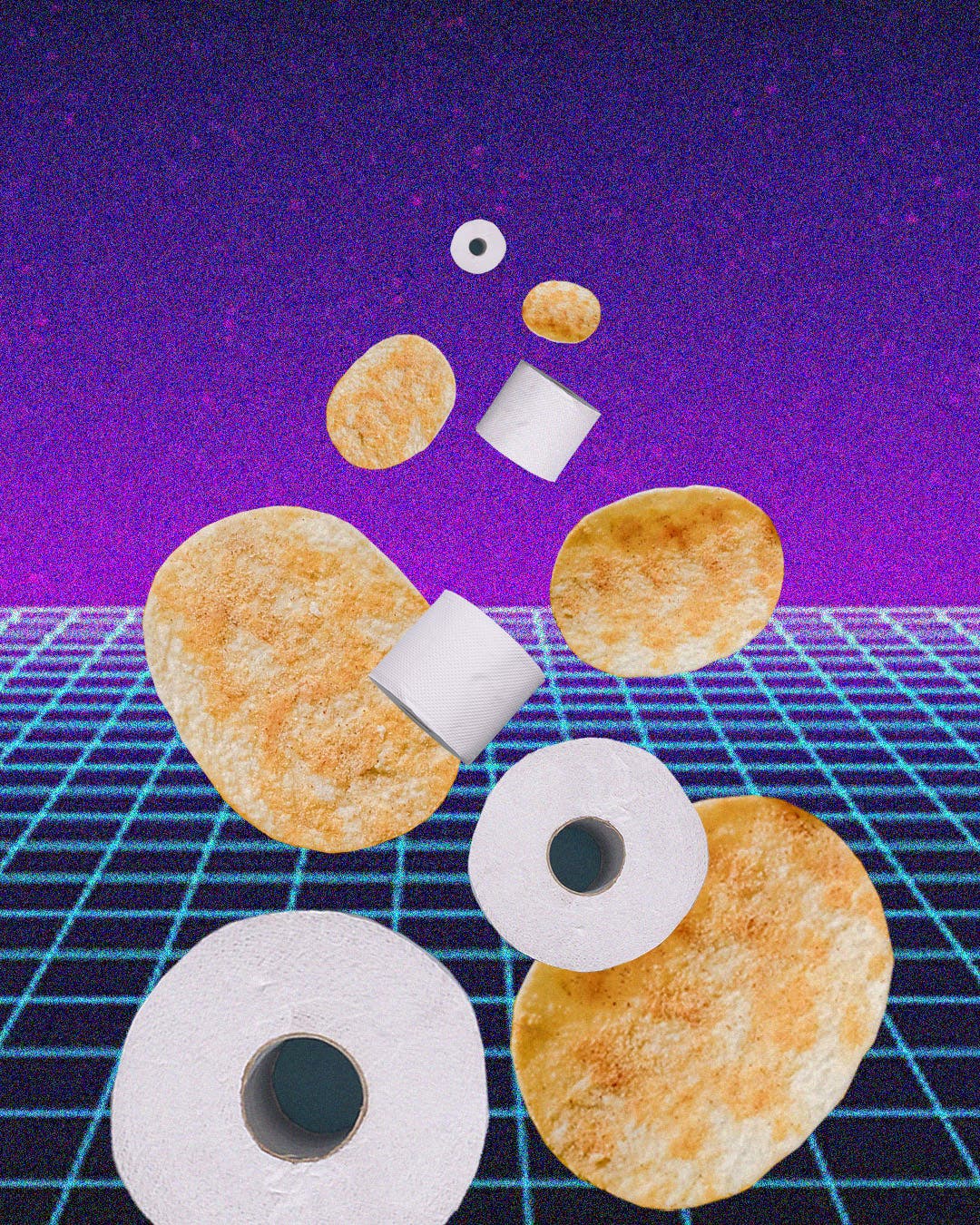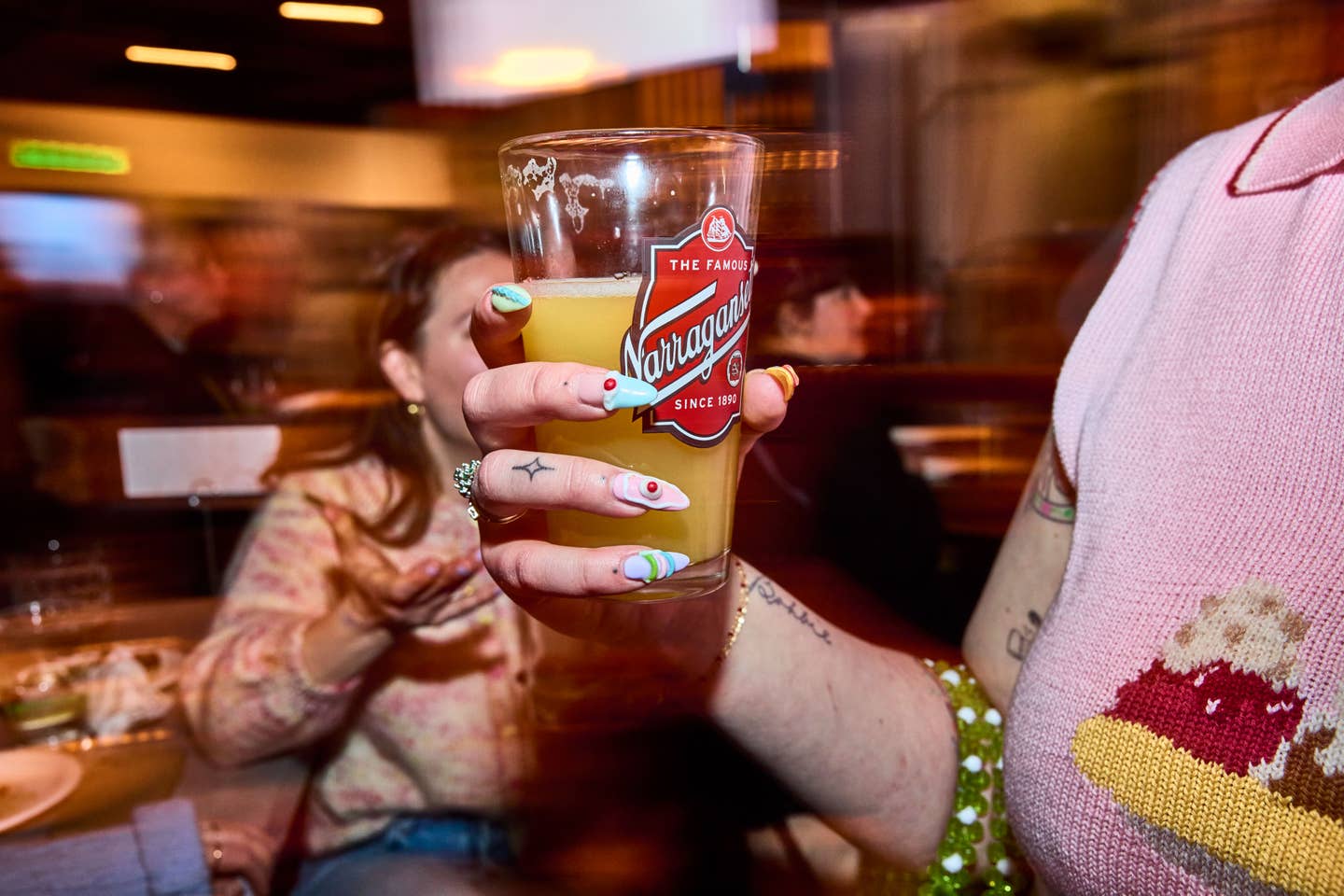My Secret Love Affair with the 1990s’ Most Scandalous Snack Food
Before Lay’s WOW Chips became synonymous with ‘anal leakage,’ I ate my fill—and paid the price.

“If you eat so many WOW chips that they make you shit, it’s negative calories – like celery.”
A well-meaning, but horribly misguided friend (we’ll call her Beth) gave me this piece of advice when I was 14 years old at the height of the fat-free diet culture wave. And so began my obsession with America’s most controversial ‘90s snack.
If you were lucky enough to avoid the short-lived Lay’s WOW chip craze, here’s the skinny (pun intended): In 1998, Lay’s began selling a new line of chips that was purported to be “healthy.” Unlike the original potato chips, which are cooked in corn, canola, or sunflower oil (or a blend), WOW chips were fried in Olestra, an FDA-approved, calorie-free fat substitute.
Procter & Gamble spent nearly a quarter of a century and an estimated $200–$300 million developing Olestra. The “silver bullet” oil (aka Olean) worked by speeding through the digestive tract without being absorbed by the body. What many didn’t know, however, was that Olestra took the rest of the food you ate along for the ride, causing gastrointestinal side effects like diarrhea, abdominal cramping, gas, and bloating—especially if you ate more than the recommended serving size (more on that in a minute). As early as 1997, when Olestra was being tested, the Center for Science in the Public Interest had released findings about these negative effects and even set up a hotline for people to call in and log their symptoms.
So how did Olestra—and by association, WOW chips—manage to dominate the snack sector for a fleeting, yet significant, moment in the late ‘90s? I can’t speak for all WOW enthusiasts (or victims?), but many viewed them as a handy tool that wouldn’t impede their quest for ultimate thinness. For me, they became a dangerous habit that continues to influence how I eat, nearly 25 years later.
I’ve always been a grazer, and in 1999, when I was a freshman in high school, WOW chips were my go-to afternoon snack. My friends said they couldn’t taste the difference between WOW chips and the standard Lay's, but I could, and I liked the WOW versions better. They were crispier and more satisfying.
Fat-free potato chips that were actually delicious? It sounded too good to be true: We ‘90s kids were used to being duped by supposedly healthier snack foods that were sad facsimiles of the originals. I remember once biting into a SnackWell’s devil’s food cake, spitting it out, and purging my palate with approximately six glasses of milk. So I was skeptical about WOW chips when they first started appearing in stores.
Unbeknownst to me at the time, the U.S. Food and Drug Administration was slapping warning labels on WOW chips that read, “Olestra may cause abdominal cramping and loose stool.” If I’d bothered to read the fine print, I would’ve avoided a world of hurt.
My affinity started in the school cafeteria with a bag of WOW Ruffles Cheddar and Sour Cream. When I offered one to Beth, the friend I mentioned earlier, she declined. “Stacy uses those to lose weight,” she said. Now, Stacy was Beth’s older sister, and the absolute coolest person I knew. I wanted to drive a Mustang convertible like she did and dreamed about wearing her killer Express jeans. If she ate WOW chips on the regular, then I was going to, too.
Now, I had never dieted. But like the rest of my generation, I’d internalized fat phobia through late-night infomercials for Nutrisystem and Bowflex, endless images of skinny models, and magazine ads for Weight Watchers and SlimFast. So I joined the ranks—but instead of spending hundreds of dollars I didn’t have on exercise equipment and weight loss plans, I’d channel Stacy and eat WOW chips, not just as a tasty treat, but as a way to stay slim by giving myself diarrhea. Eat chips. Look hot. Just like the cool kids.
When I was feeling bloated or my pants felt tight, I threw down. A couple of handfuls would clean me right out. This went on for about six months, and I felt like I was gaming the system. I didn’t need Chuck Norris to try to sell me a Total Gym in order to lose weight: I was staying skinny with potato chips. But it all came to a screeching halt one afternoon in drama class.
I was the sole lighting technician, and it was the dress rehearsal for the show we’d been working on all semester. As we were nearing the last scene—when I was supposed to dim the lights—my stomach started to rumble. I knew it was the WOW chips talking. I began to panic—nobody could come to my rescue. I crossed my legs. Gritted my teeth. Beads of sweat streamed down my forehead. In the end, I had to make a run for it. By the time I was back in the booth, it was too late: The two actors on the stage were improvising desperately, pretending to look for a light switch. (Funny enough, the audience thought it was part of the script!) I cut the lights, but I never lived it down—still sorry, Christy and Lauren!
It was a wake-up call. Eating WOW chips not only jeopardized my academic success but also my friendships and my health. I vowed to never eat a WOW chip again.
Lay's would go on to rebrand WOW chips as Lay's Light in the early 2000s, but by that time, the damage was done. The company couldn’t outrun the negative publicity. By 2016, Lay’s had quietly removed Olestra from all of its products. Yet despite all the controversy, Olestra remains FDA approved. (It’s banned in Canada and Europe.)
WOW chips live on in infamy. They were named one of the 50 worst inventions by TIME Magazine, and rightfully so. As for me, I was too young to grasp how dangerous Olestra was. I wonder about potential long-term harms that we have yet to discover. We’re smarter today, but the desire to be thin endures, especially on social media, which thankfully wasn’t around in my formative years. But something positive did come from my experience: When I snack, I instinctually never overdo it. You never know when something might send you running (pun intended).
Keep Reading
Continue to Next Story










